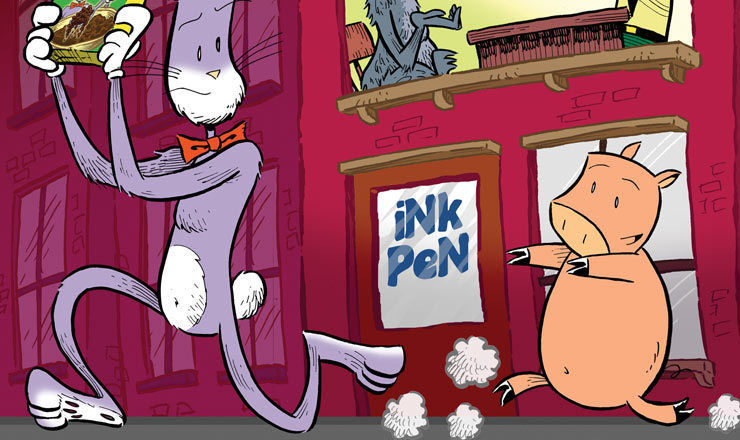Coming Soon 👀 At the beginning of April, you’ll be
introduced to a brand-new GoComics! See more information here. Subscribers, check your
email for more details.
Ink Pen by Phil Dunlap for February 22, 2015
Transcript:
Clerk: ... and here's your change! Ralston: Thanks - who came up with this anyway? Captain Victorious: What? Ralston: Plopping your coins on top of your bills when they give you change! Everybody does it, but no one I know stores their coins and bills in the same place! So then you gotta separate them again, but they came from different places to begin with! So why combine them at all, y'know? Captain Victorious: Sorry. You were saying? Ralston: *sigh* Complaining about cash transactions is a dying art...



RetFor about 10 years ago
thats always bugs me too… they pull out the bills and then hold them while they count out the change. give me the bills already so i can put em away while you count the change!
Plumbob Wilson about 10 years ago
It’s just a matter of time. Those bills have serial numbers, you know.
hex about 10 years ago
When I am making change I always give the coins first, then the bills. Putting the coins on top of the bills makes it too easy for the coins to slide off onto the counter and ultimately onto the floor. Coins in the hand first makes them easier to control.
Also, I always count the change being given as I give it: “two-sixty-four (the amount of the transaction), two-six-five, (the penny), two-seventy-five (the dime), three (the quarter), four, five (the bills),” which finally specifies the amount I was given and demonstrates that the amount of change is correct. More quickly: give the customer the coins without counting them back individually: “two-sixty-four (transaction), three (the coins), four, five (the bills).”
puddleglum1066 about 10 years ago
I assume some management consultant proved they can save a tenth of a second per transaction by handing your change back this way. Of course, this doesn’t consider the extra ten seconds the customer spends putting the change into its proper place (while standing at the counter).
Plods with ...™ about 10 years ago
It started when cashiers had to have the register tell them how much change to give.Watch them. They look at the amount, then pull it out of the till in that order.